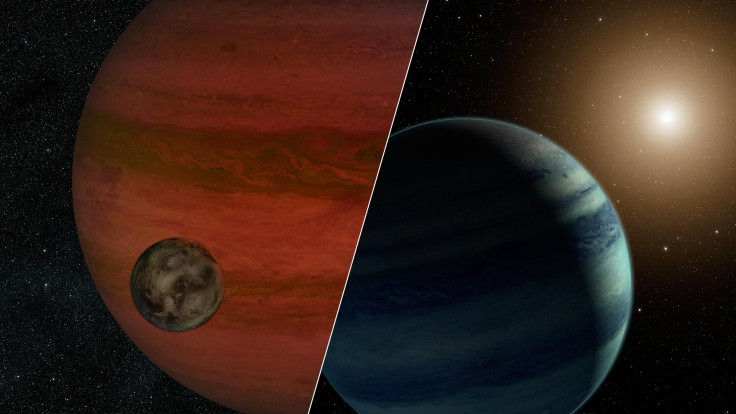First Exomoon Spotted: Is It The Real Deal, Or Just A Planet Orbiting A Star?

Astronomers may have spotted the first exomoon candidate, but the true identity of their discovery may never be determined. According to the study, the discovery may be an exomoon or a planet orbiting a star but due to the nature of the discovery, a chance alignment between two objects, it is difficult to say with certainty.
Researchers from the Japan-New Zealand-American Microlensing Observations in Astrophysics (MOA) and the Probing Lensing Anomalies NETwork (PLANET), led by David Bennett from the University of Notre Dame, used gravitational microlensing to identify the potential exomoon, or moon outside of the solar system. An exomoon candidate has yet to be discovered and such a discovery would lead to the identification of a new planetary system, a lone planet that is not orbiting a star with a moon as its companion.
According to NASA, gravitational microlensing is a technique that uses a star in the foreground to magnify a distant object. If a planet is orbiting the foreground star it can act like an additional lens which will dim or brighten the light from the distant star. The researchers can also determine the mass of the closer star, in relation to its orbiting planet, using this technique.
The alignment necessary for gravitational microlensing can last around a month, notes NASA. A planet can also be used as a lens, with its moon acting as a second lens, which causes a problem for the researchers as they cannot identify the foreground object.
With an unknown foreground object, there are two possible scenarios for what the discovery, the system is identified as MOA-2011-BLG-262, could be. According to NASA, the foreground object could be a small star with a planet with a mass roughly 18 times that of Earth or a planet with a larger mass than Jupiter with a moon that is smaller than the Earth.
Wes Traub, the chief scientist for NASA's Exoplanet Exploration Program office at NASA's Jet Propulsion Laboratory, said “one possibility is for the lensing system to be a planet and its moon, which if true, would be a spectacular discovery of a totally new type of system.” Traub was not directly involved in the study.
Unfortunately, the alignment is over and the researchers cannot take additional measurements that could determine how far away the object is from Earth. If the object is nearby, it is likely to be a low-mass system, whereas if it is farther away from Earth it is likely to be a more massive system.
“We won't have a chance to observe the exomoon candidate again,” said Bennet in a statement. The research was published in the Astrophysical Journal.
© Copyright IBTimes 2024. All rights reserved.





















